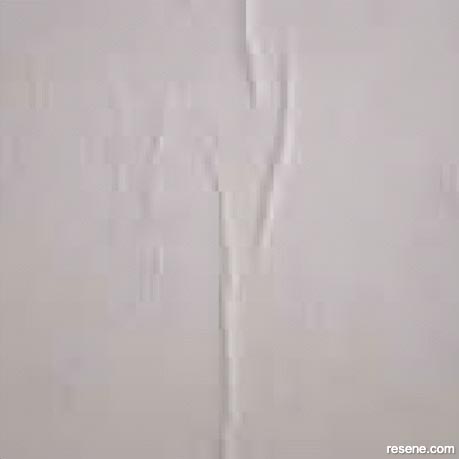From the wallpaper problem solver - quick reference guide
There are several reasons why bubbles may form underneath wallcoverings during and following installation.
Extreme porosity of the substrate (wall surface) is commonly a major culprit.

Expansion bubbles
How to avoid and fix bubbles when wallpapering
Surface preparation is critical. In some cases a pigmented sealer must be used to reduce and help eliminate the porosity. When using a sealer, once dry this must be prepared as a painted surface before sizing and installation of the wallcovering. If the surface is not sealed when wallcovering is installed, the porous areas on the wall will quickly absorb the moisture from the adhesive and cause an air pocket to form, which is revealed as a bubble.
Poor quality water-based paint can become soft and could also cause bubbles to form. On solid plaster or fibrous plaster walls, apply a coat of oil based pigmented sealer and then a coat of size to prevent the surface from gassing causing bubbles.
All wall surfaces must be sanded and dusted thoroughly prior to applying any sealer or size in order to remove all contaminants. Otherwise, these objects can be highlighted and telegraphed under the wallcovering following the installation. This will in turn cause small bubbles to form a round the contaminants.
Sometimes air bubbles can be caused by air bubbles being in the adhesive. This can be caused in two ways:
By excessive whipping while mixing the adhesive, causing aeration (trapped air bubbles).
With all granulated adhesives, if the adhesive is not mixed properly it will leave lumps. These can be dry in the center and can omit air as they absorb moisture causing bubbles.
Bubbles can appear when installed over existing wallcovering that has not adhered completely to the wall surface. The moisture in the adhesive will cause loose areas to swell and expand in the existing wallcovering, causing bubbles to appear.
There are times when bubbles will appear after a wall or area has been completed for an hour or two. This can happen if when the size was applied, areas were missed, allowing the drying paper to suck air, causing the bubbles. These will normally settle down if left alone.
Since most wallcoverings require a water-based adhesive system, it is very important to allow wallcoverings, excluding paste-the-wall products, to soak and relax for a given period of time before starting installation (the exact soaking time is on the instruction sheet on every roll of wallcovering). Otherwise, the wallcovering will continue to expand once it has been applied to the wall surface. This can cause expansion bubbles to form. If this occurs, remove the strip from the wall, fold and leave to relax for a longer period of time.
Expansion bubbles can only be caused by the wallcovering being hung too soon after being pasted and not given enough time to relax and expand before hanging.
Wallpaper problem solver
Thank you to Aspiring Walls for providing the information for this quick reference guide.
Wallpaper problem solver topics Ask an Expert How to wallpaper
Order online now:
Testpots |
Paints |
Primers and Sealers |
Stains |
Clears |
Accessories
![]() Get inspired ! Subscribe
Get inspired ! Subscribe ![]() Get saving ! Apply for a DIY card
Get saving ! Apply for a DIY card
Can't find what you're looking for? Ask us!
Company profile | Terms | Privacy policy | Quality and environmental policy | Health and safety policy
Colours shown on this website are a representation only. Please refer to the actual paint or product sample. Resene colour charts, testpots and samples are available for ordering online. See measurements/conversions for more details on how electronic colour values are achieved.
What's new | Specifiers | Painters | DIYers | Artists | Kids | Sitemap | Home | TOP ⇧
